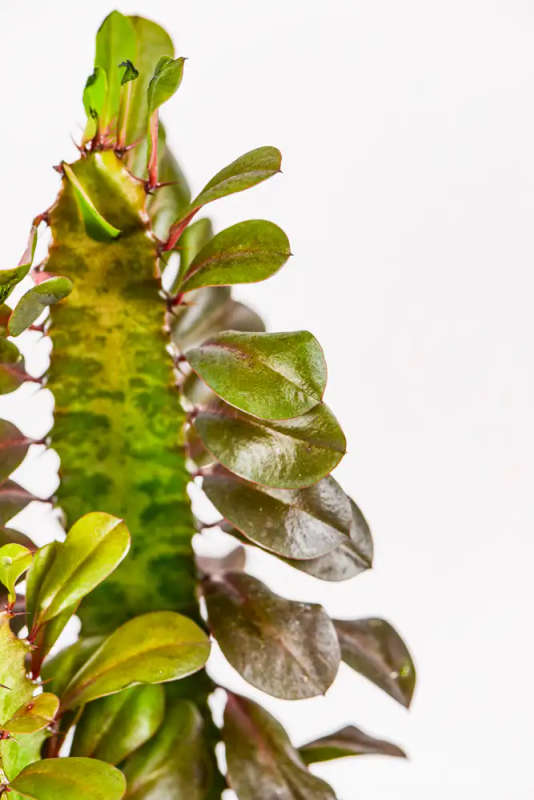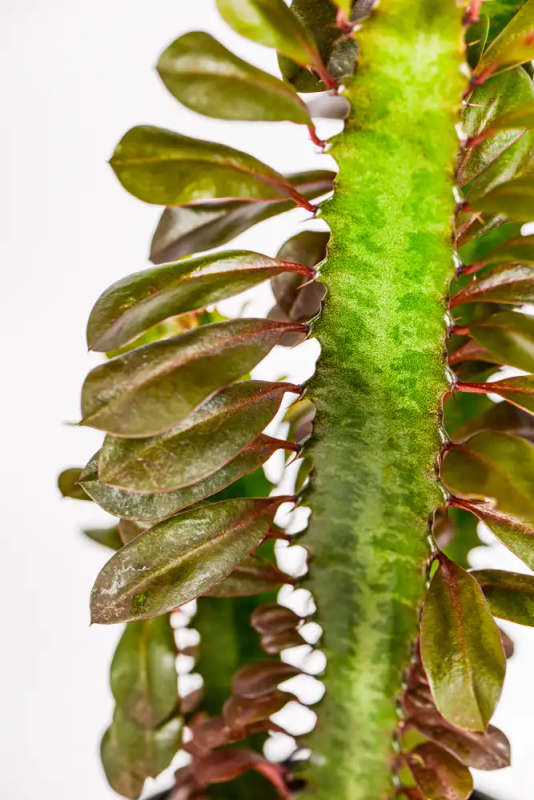









Ruby African Milk Tree
Check my rate
| Main centres: | 1-3 business days |
| Regional areas: | 3-4 business days |
| Remote areas: | 3-5 business days |










| Main centres: | 1-3 business days |
| Regional areas: | 3-4 business days |
| Remote areas: | 3-5 business days |
Striking and structural, the Ruby African Milk Tree (Euphorbia trigona) is a fast-growing succulent that adds height and bold form to your space. Its upright, cactus-like stems and deep green ridges are dotted with small, oval leaves a real showpiece! It's low-maintenance, thrives on neglect, and is perfect for bright corners or patios.
Commonly known as: Ruby African Milk Tree
Botanical name: Euphorbia trigona Rubra
The Ruby African Milk Tree is an eye-catching succulent known for its upright, architectural shape and rich green stems edged with ridges of short thorns and small leaves. Though often mistaken for a cactus, it's actually a euphorbia, and it produces a milky sap when cut hence the name. In ideal conditions, it can shoot up impressively fast, often growing over a metre tall indoors. Outdoors, it's a striking feature in rock gardens or sunny patios.
Despite its dramatic appearance, this plant is surprisingly easy-going. It needs minimal water, loves plenty of sunlight, and doesn't ask for much attention. A great option for plant parents looking for something sculptural that won't fuss over missed waterings. Just be sure to handle with care the sap can irritate skin, and it's best kept away from pets and children.
This is a perfect choice for fans of low-maintenance plants with a bold, modern vibe.
Light:
Thrives in bright, indirect light and will tolerate full sun. A sunny window or outdoor position in filtered light works well. If grown indoors, rotate it every few weeks for even growth.
💧 Water:
Water sparingly. Let the soil dry out completely between waterings. In winter, reduce watering even more once a month is often enough. Overwatering can cause root rot quickly.
🌱 Soil:
Use a very well-draining mix. A cactus or succulent mix is ideal. You can also add extra perlite or coarse sand to improve drainage.
🌡 Temperature:
Prefers warm temperatures above 15°C. Keep it protected from frost and icy draughts. If outside in summer, move it back indoors before cold snaps.
🌸 Fertiliser:
Feed once a month during spring and summer using a diluted cactus fertiliser or organic fertiliser. Skip feeding in winter when growth slows.
🪴 Repotting:
Repot only when root-bound usually every 2 to 3 years. Choose a pot with drainage holes and handle the plant with gloves to avoid contact with the sap.
🐛 Pests:
Generally pest-resistant, but watch for mealybugs or spider mites. Treat infestations with insecticidal spray and isolate if needed.
Be sure to visit and follow our page and follow us on
